

Top tips and advice on avoiding plastics for an eco-friendly festive season
Antaya March, Senior Research Associate for Revolution Plastics and the Centre for Blue Governance, shares expert advice on avoiding plastics in all your festive gifts and decorations this year.
I recently moved back to the UK and with no existing Christmas decorations, I decided to set myself up for the festive season plastic free. Not only is it a challenge that supports my work as a researcher with Revolution Plastics, it’s a great opportunity to make others in my life aware of the global plastic crisis. Hopefully it’ll inspire some small changes in your life too.
Plastic free Christmas decorations
I started by thinking about Christmas decorations. What did I already have that I could use, rather than buying new? The answer: fairy lights, some paper mache mushrooms and about 40 houseplants.
While fairy lights aren’t plastic free, I’ve used ones I already own to decorate my home. As great as it is for us all to go entirely plastic free, it’s important to use what you already have.
So don’t just ditch your existing plastic decorations – make them last as long as they can and then dispose of them correctly (ideally to be repurposed or recycled) to ensure they don’t just end up in landfill or as pollution.
Plastic free ornaments
I’ve also used a number of homemade, paper and natural decorations:
- cinnamon sticks tied together with red ribbon (cotton, not polyester)
- oranges sliced and oven roasted tied up with red ribbon
- pine cones tied up with brown twine (I painted the tips with white nail polish I already had to give it a snowy effect)
- bows made out of a mixture of different ribbons and twines
- paper concertina trees
- a wooden gold-painted star bought from a plastic free store
- elves made from cotton and hemp
- wooden reindeer decorations gifted to me by a family member
- cut out paper snowflakes placed in the window
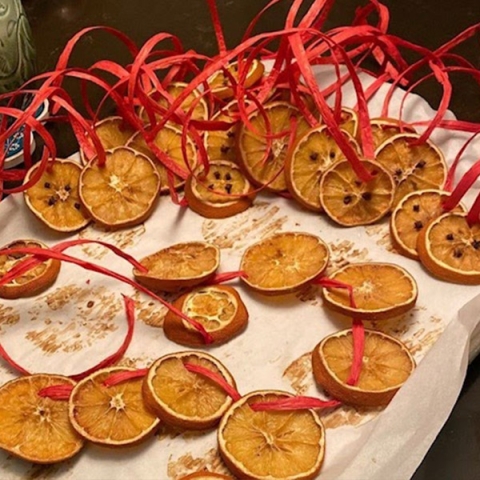
Roasted orange slices tied with red raffia are a cheerful alternative to plastic decor.
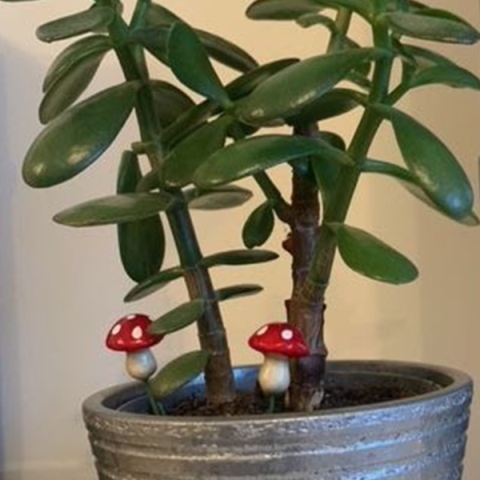
I put paper mache mushrooms in my houseplants to add some red to the greenery.
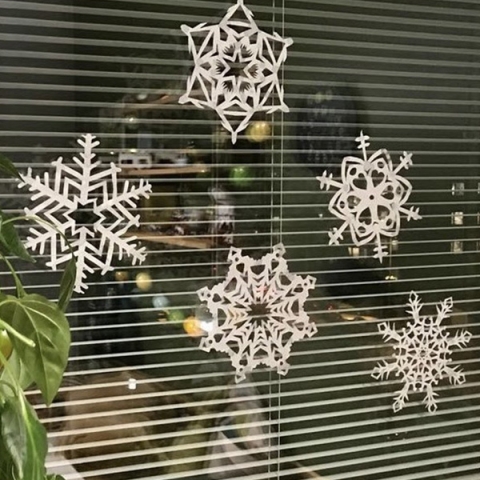
Paper snowflakes are an easy way to add some festive spirit to your home.
Make a natural wreath
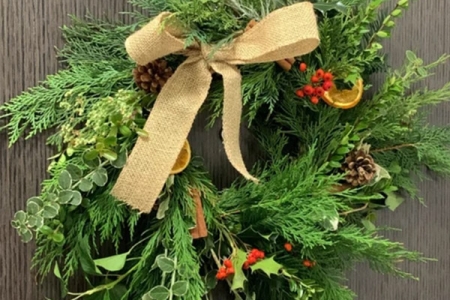
Choosing a sustainable Christmas tree
We decided against buying a Christmas tree for two reasons:
- We did not want to buy a plastic one as it would need to be used for 10 years to have the same footprint as a real tree. And it can’t be recycled when no longer in use.
- Fresh cut trees tend to end up in landfill and we didn’t want to kill a tree unnecessarily.
So we’ve found another option...
Renting a Christmas tree
It’s a pot grown tree that you pay a fee for, including a deposit. It gets delivered to your house, and collected again after the Christmas season. If you send it back alive and healthy, you get your deposit back.
It’s far more sustainable than cut trees, as it keeps the trees in circulation – and pot grown trees take up much less land and water to grow. We chose the size we wanted and it was delivered in the first week of December.
How to recycle your real Christmas tree
If you can’t find a rented tree service as they’re still quite new, I’d opt for a live tree rather than a plastic one. Most importantly, recycle it properly.
Visit your local authority website to find out how to recycle your live tree. Many local authorities offer a drop-off or curbside tree recycling service, so your tree can be put to good use by being chipped and used locally.
If you live in Portsmouth, Portsmouth City Council has advice on recycling your Christmas tree locally.
Plastic free Christmas gifts
This year we decided to limit ourselves to one gift per person – and all gifts are to be plastic free.
Initially this seemed to be the biggest challenge, but has ended up being the easiest. Depending on the person, I’ve mostly opted for experiences – such as a day out, a kayaking voucher, a surf lesson, a wine tasting session and so on.
The benefit of experience gifts is they don’t require any wasteful wrapping. I just popped a hand written piece of paper into a Christmas card printed on seed paper. That way, the card can be buried in the recipient's garden and will bloom into lovely flowers as a continued gift.
For others, I’ve opted for consumables such as biscuits and treats from local independent stores or something they can make or do at home, such as a DIY craft kit or baking set with instructions.
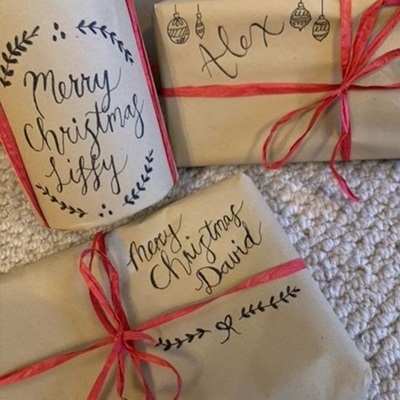
Eco friendly gift wrapping
Where I’ve bought physical gifts, I’ve wrapped them in brown paper that’s fully recyclable, left out the sticky tape and used red raffia to tie them. This took a bit of practice to get the wrapping to stay closed, but there are plenty of YouTube tutorials available.
Other options include wrapping gifts using paper tape, or material tied up together. For more decorative flair, you could add some foliage, dried orange slices or a feather.
I decided against unnecessary name tags, but rather wrote directly onto the wrapping paper (one less wasteful item per gift).
Top tips for a plastic free Christmas
- Ditch the glitter and tinsel. Even bio glitter. Glitter and tinsel just end up as microplastics – tiny particles of plastic that pollute the environment.
- Don’t buy more than you need. This goes for decorations and presents. Before you go shopping, write a list and stick to it as best you can.
- Start with small, simple changes. Each time you set out to buy something new, if it is plastic, consider if it is really worth the 400 years it will likely be around on the planet, and try to find an alternative.
- Gift your time to your loved ones, doing fun activities or something they’ve always wanted to try. This will leave a lasting impression much longer than something material that they may not even want.
Why I want to avoid unnecessary plastics
I’ve been a diver for my whole life and having witnessed the severe pollution and environmental damage underwater, I was driven to do something to help.
This led to my role as a researcher with the University’s Revolution Plastics team, working to find solutions to the global plastic crisis. I’m currently leading the Global Plastics Policy Centre to establish which policies around the world are working to combat plastic pollution, which aren’t, and why.
